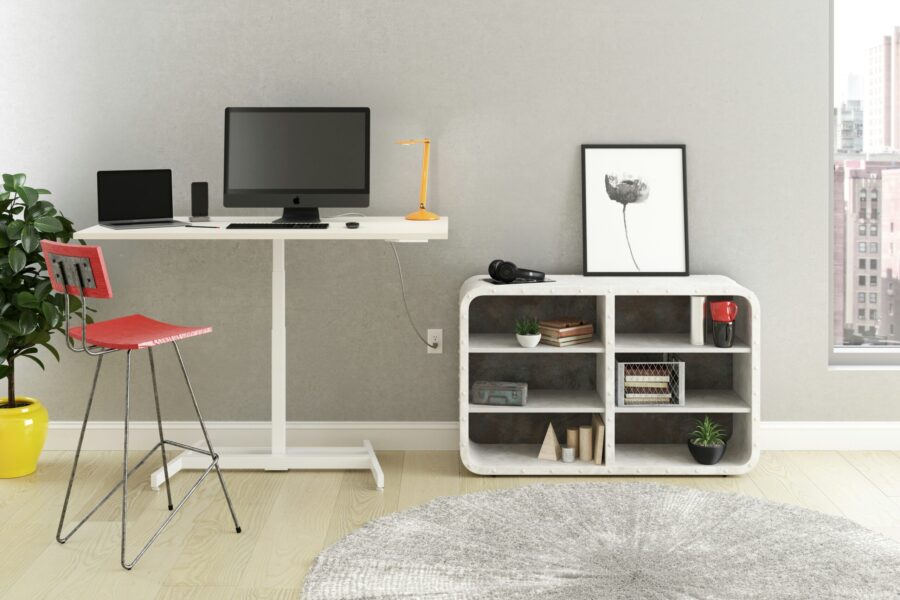As the UK edges closer and closer to becoming a “burnt-out” nation*, we as business leaders have a responsibility to do everything in our remit to make sure our employees’ wellbeing is not only considered, but at the forefront of how we conduct business. Given how much time we spend at our workplaces, it’s crucial that our office environment supports our wellbeing.
What people are really looking for from work and the office is connection—to each other and to a broader sense of purpose. The workplace can help you fulfill both these needs. An office that’s a people-magnet, with settings and design elements that bring people together and remind them that their work has meaning.
I have been fortunate to work on a wide variety of projects throughout the UK, meeting business leaders from all kinds of industries and sectors. This has enabled me to gain an incredible amount of insight on what businesses want from their office space in terms of functionality and design, and an increasingly common theme is factoring in how the workspace benefits the workforce.
While it’s easy to think that interior design doesn’t directly impact employee wellbeing, when you consider things like light, colour, space and furnishings and comfort, how a room looks, feels and functions really can affect your employees.
Recent research showed what the “colleague of the future” would look like if we were to continue with our current approach to workspace set up in our offices. “Emma”, the hypothetical colleague in question represented a prediction of what worker bodies will look like in 20 years’ time thanks to sitting down for too long in front of a screen, with the results being poor posture, a permanently bent-over back and swollen ankles among other issues. By not considering ergonomics when choosing furniture for your employees, you run the risk of subjecting employees to these issues we want to avoid.
99 per cent of the time this isn’t done intentionally, it just hasn’t been considered and overlooked – but this is why I am such an advocate of what good commercial workspace design can achieve, where you can make a recognisable difference to your employees’ life. Afterall, physical health can have such an impact on mental health.
As a commercial interior professional, I genuinely get so excited when I can directly impact a space and am able to transform it in a way that I know will have fantastic mental health benefits for those using it day in, day out. Natural light and biophilia are brilliant examples, which are well-known features for improving how we feel.
But what if your workplace is void of natural light and materials? That shouldn’t mean that your hopes of creating a bright, joy-inducing space have gone. Creatively utilising the correct light fixtures can do a great job of solving these problems when executed well. We are fortunate to have the research at our fingertips about which types of lighting affects us in different ways, such as too much blue light from computer monitors, phone screens and tablets which can cause our eyes to strain and induce headaches. Poorly diffused light can create dimly lit areas leading us to struggle to work and overly bright white light can be overstimulating.
High ceilings offer opportunity to introduce low hanging, interestingly designed light fixtures that can act as statement pieces within themselves. Pair this with bright, warm bulbs and you can create spaces flooded with light without windows or skylights. As well as the fact we can’t deny that we tend to feel more positive when we are in attractive, aesthetically pleasing environments.
Consider the psychology of colour – we are all influenced, whether we notice it or not, by the colour palettes of our surroundings. As much as you may love to include your company colours and branding into commercial workspace design, it should take a backseat if the alternative is not prioritising employee wellbeing. If there is a need to add warmth into a space, we can introduce earthy tones like reds, oranges and yellows, while blue hues, green tones and adding wood and natural finishes make for a calmer, serene setting which can be helpful in reducing stress.
While we know that a workplace’s primary function is for people to work and be efficient, they are places where we spend a large percentage of our time, so it is important that we make spaces where we can get away from our desks. But being efficient isn’t just about more or less space, it’s about using the space you have to create a seamless workflow for people.
Breakout areas, on-site gyms, coffee spaces and even bars – these may seem like “extras”, but they have an inherent benefit that they help with employees’ wellbeing. They provide space away from computer screens, from meetings and presentations and allow for people to collaborate, be creative in teams and add a social element to the workplace. We are social animals, and we thrive when we can enjoy ourselves with our peers.
I know that an office re-fit can be a big investment, with medium-quality fits out in the North priced at an average of £1,910 per square meter**. But you don’t need a big, labour and cost-intensive investment to make a difference. There are lots of great ways that you can elevate your workspace for a positive outcome. Creative use of new furniture pieces can inject a softer, more collaborative and calmer feel to many offices. Furniture can be used to inexpensively create new areas for breakout, meeting and collaboration. Invest in good quality task seating – let your employees see how much you value them by providing them with a chair to support their whole skeleton, this can foster collaboration and improve employee attraction and retention. Plants have long been known to increase oxygen levels and the ability to filter pollutants in the air, not to mention they look great as well. Add some thoughtful finishing touches that your employees can resonate with and appreciate. Do you work in a regional office with a proud identity? Let it show!
Since the pandemic and the resulting shift to many people working from home, our relationships with workplaces have changed, from hospitality spaces to the classic office. Hybrid working is here, and I don’t think it is going anywhere. Working from home brings benefits such as no commute and reduced costs on travel and food – so, if people are going to come into the office their needs to be an incentive. Creating spaces that are beautiful, productive with positive impacts on their wellbeing is exactly that incentive. We can create places for people to do their job where they can be social, away from home pressures such as chores and childcare. We are creating workspaces of the future, which adapt to how our approach to work has changed, as well as our approach to our health and wellbeing.
As you may be able to tell, this topic is one I can discuss all day and it’s often something that’s easily overlooked. I urge all of us as business leaders to take a look at where we expect our workforce to spend their time, and is it helping their wellbeing or is it in-fact hindering it? Long gone are the rows of private offices, strip lighting and poor-quality furniture. Let us, as experts, integrate the design process to help companies create offices that work as hard for employees, as they do for the business.
References
*Burn out report 2024 – Mental Health UK
** UK office fit out report 2024 – Cushman & Wakefield

Marianne Bloodworth
Marianne is director of furniture at Yorkshire-based Absolute Commercial Interiors. Having worked the commercial interiors sector for 16 years, Marianne has worked across the UK transforming spaces for clients in many sectors from manufacturing to hospitality, with the driving force behind her work a desire to make workplaces better for all of those who use them.


